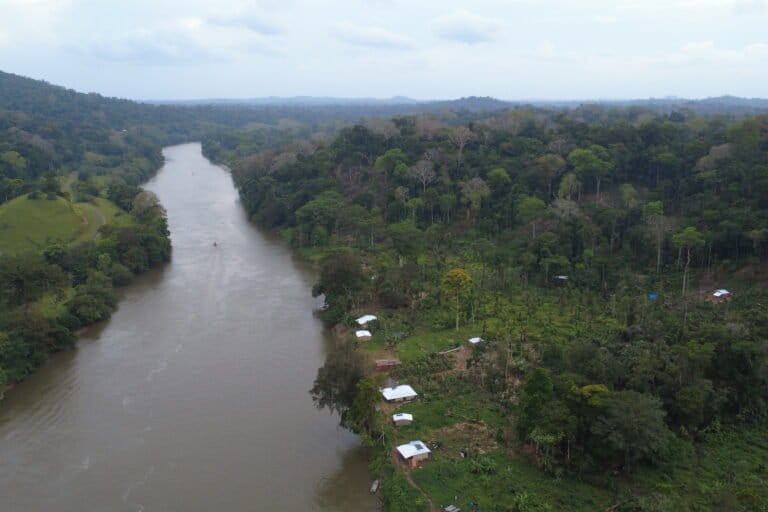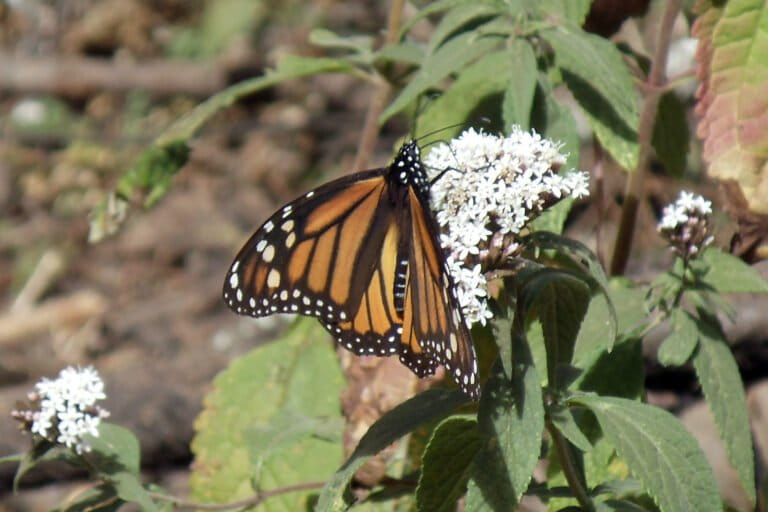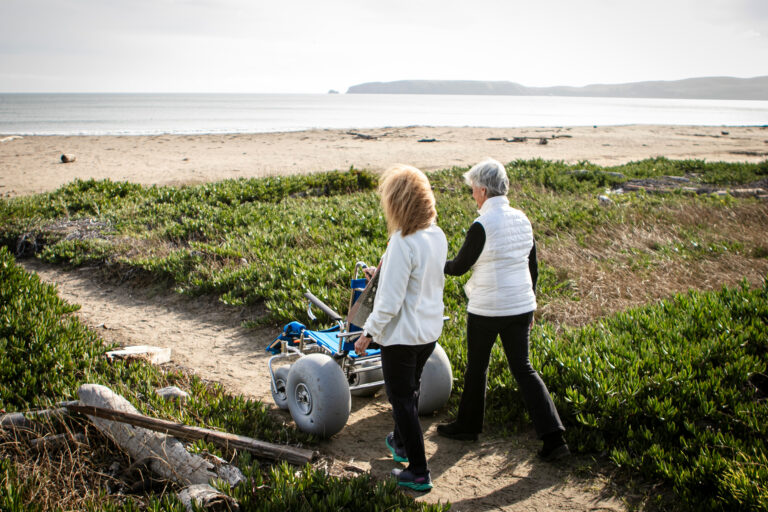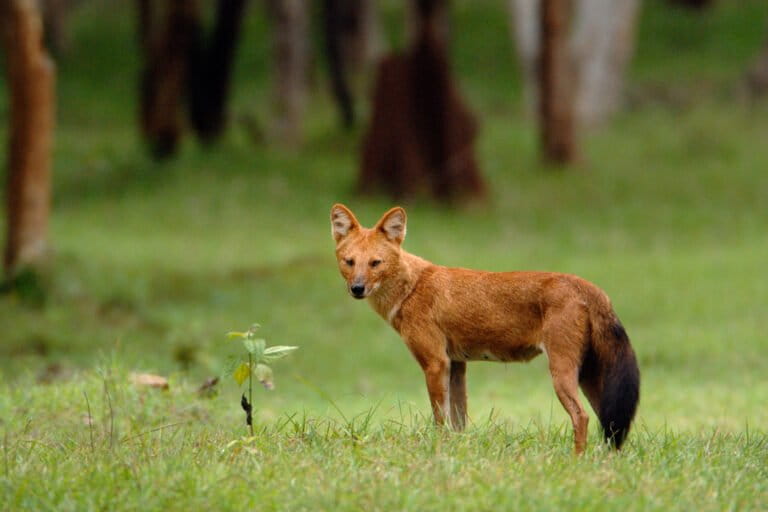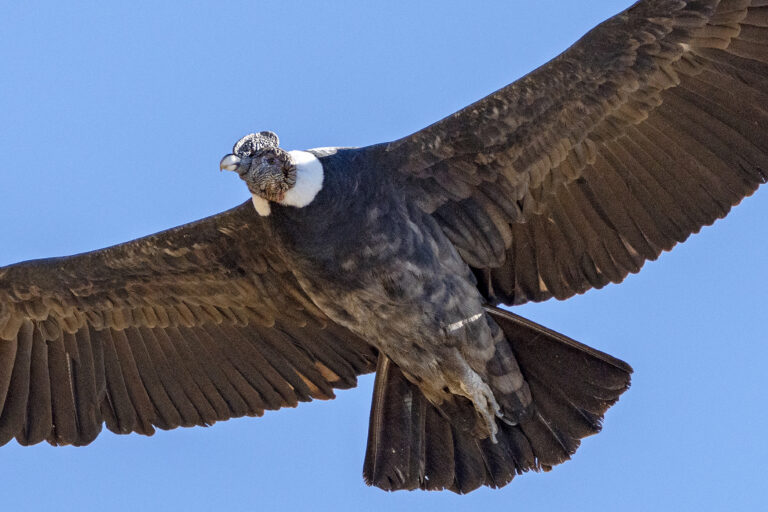- A new book, “Pandora’s Toolbox: The Hopes and Hazards of Climate Intervention,” explores a number of ideas for pulling carbon out of the atmosphere or artificially cooling the planet, known collectively as geoengineering.
- The book argues that such dire actions may need to be taken by future generations to combat climate change, and if so, those generations deserve to inherit research done now to understand the potential impacts and feasibility of geoengineering.
- One tool whose implementation is likely inevitable, according to the book, is pulling carbon from smokestacks and the air and then sequestering it deep in the Earth, a technology currently happening at a very small scale. Another approach, far more controversial, would be to inject aerosols into the stratosphere to cool the Earth.
- None of these methods precludes the need to decarbonize now and fast. But given the dangerous trajectory of climate change, author Wake Smith argues that suffering future generations may decide to pull the geoengineering trigger.
On June 15, 1991, Mount Pinatubo erupted in the Philippines, sending around 5 cubic kilometers (1 cubic mile) of mountaintop into the atmosphere. Some of that material, mostly sulfuric acid and ash, rose 20 kilometers (12 miles) into the stratosphere and repeatedly circled the globe. The result: the volcanic eruption reflected sunlight and cooled the Earth by 0.5° Celsius (0.9° Fahrenheit) for several years.
Some scientists for a couple of decades now have been considering whether or not humans could — or should — attempt to artificially replicate the effects of volcanic eruptions like Pinatubo, adding aerosols to the atmosphere in a bid to cool the Earth. This approach might be especially welcomed by future generations if climate change impacts ramp up from being decidedly horrible to repeatedly catastrophic.
While we are nowhere near implementing such a head-spinning idea, Wake Smith’s new book, Pandora’s Toolbox: The Hopes and Hazards of Climate Intervention (published by Cambridge University Press this March), argues that we certainly could do it. Whether or not we should will be up to future generations, he says. As a Yale lecturer, Smith is arguably the first person to teach a class specifically focused on climate intervention. Before academia, he worked in the commercial airline industry, giving him a unique perspective on how one might achieve “stratospheric aerosol injection,” as experts call it.
Along with mimicking volcanoes, Smith’s book also tackles various other geoengineering ideas, some of which sound more promising — or at least worth more study — than others. Marine cloud brightening, anyone?
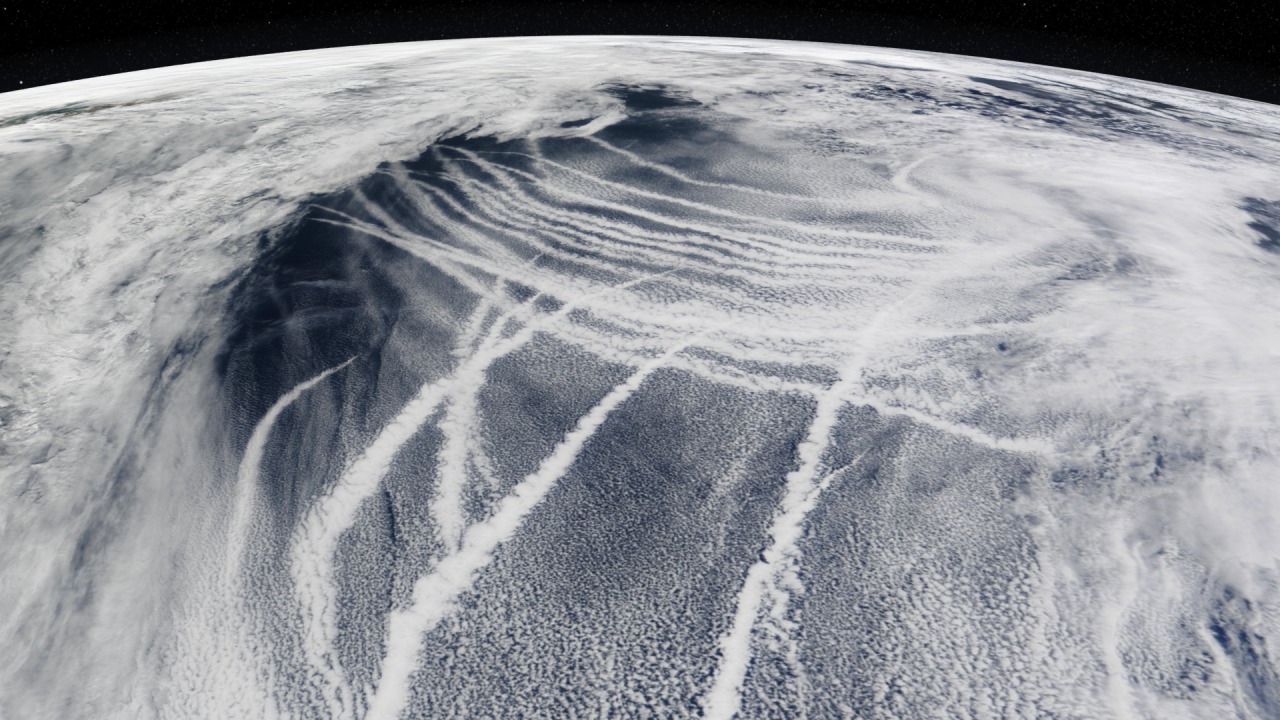
Geoengineering is, of course, a sobering and troubling topic to many — and Smith agrees over and over that it should be worrying. But he also believes geoengineering deserves attention and research now, especially given how slow we’ve been to kick fossils fuels to the curb. He believes that if things get bad, really bad, future generations may well decide to implement one or more geoengineering techniques as their best defense against climate breakdown. And they will be better served if current generations research what approaches might be most workable and safe — and which ones might not.
Of course, none of this would be without risk. For example, some theorize that injecting aerosols into the stratosphere could change weather patterns regionally or worldwide, making some areas wetter and others drier (something climate change is already doing). Others understandably fear geoengineering’s potential impacts on ecosystems and agriculture (both, also, today suffering from a warming climate). But Smith points out repeatedly that we can’t know what the risks are until we investigate: Would an ameliorative measure be worse than the disease? We simply don’t know until we look.
In Pandora’s Toolbox, Smith goes deep into some better-known climate intervention methods to attack the climate problem, most notably carbon capture from smokestacks or from the air itself — both of which are already happening, albeit at small scales. These techniques could be ramped up, he says, as humans become more determined to undo the damage of the fossil fuel age.
The latest United Nations Intergovernmental Panel on Climate Change (IPCC) report warns that we have until 2025 to reach peak emissions and then must rapidly decarbonize to maintain any hope of keeping temperatures from rising beyond 1.5°C (2.7°F) above preindustrial levels. Many fear, rightly due to government sluggishness, that we won’t achieve that, and that planetary disaster could follow. Even if world governments meet all of their current carbon reduction pledges, the world will still likely warm by 2.7°C (4.9°F) by 2100, according to last year’s Emissions Gap Report. That’s potentially cataclysmic.
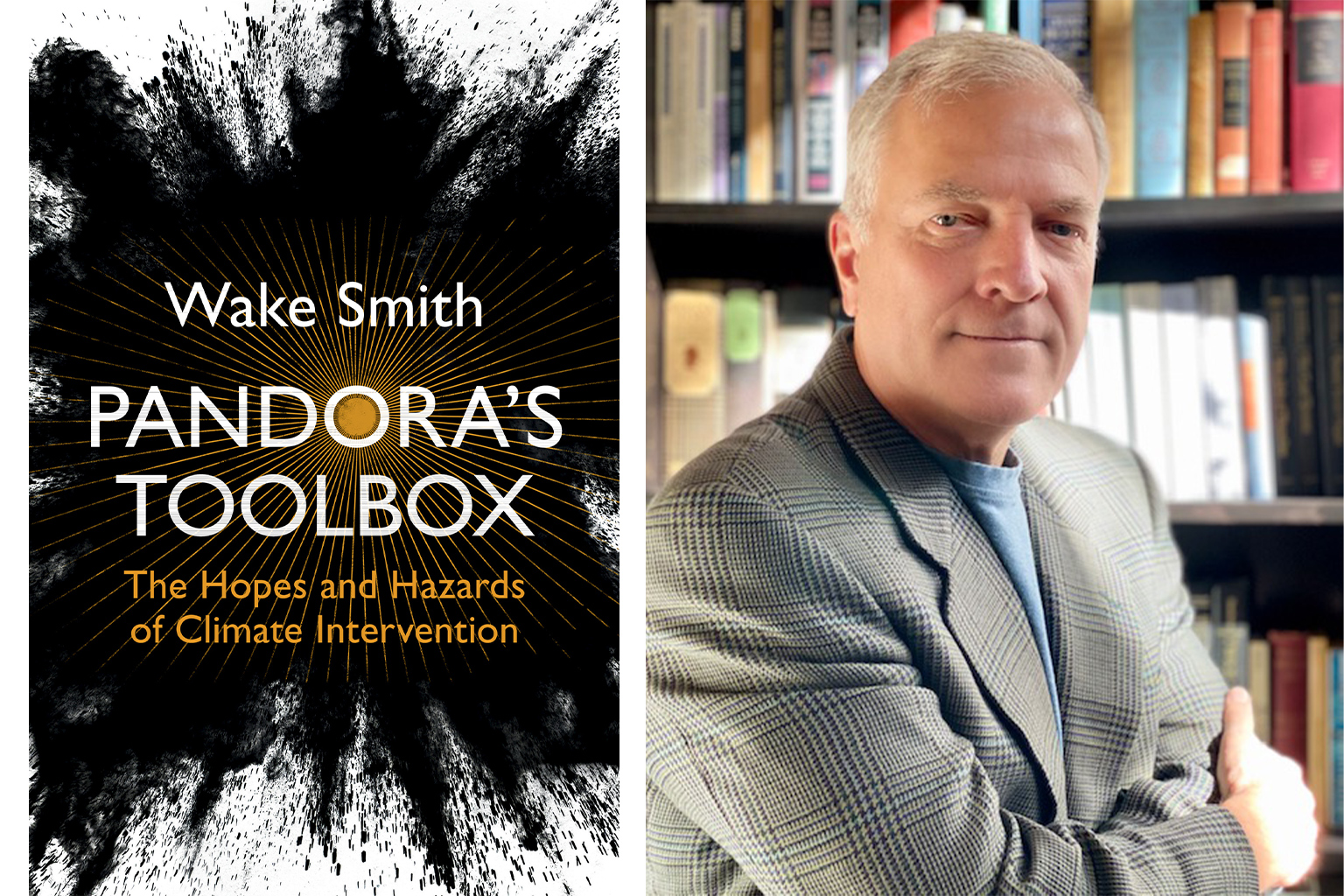
In an interview with Mongabay’s Jeremy Hance, Wake Smith talks about carbon capture potential, geoengineering options, and the understandable hesitation around actually doing geoengineering — even extending to simply performing research. This interview has been edited for length and clarity.
Mongabay: In your new book, Pandora’s Box, you come right out and say that you believe large-scale climate intervention, including potentially geoengineering, is inevitable. Why do you believe that?
Wake Smith: I’m going to quibble a little, but I’m not going to back away from that. So, it’s inevitable if we don’t reach net-zero [emissions] quickly. And I think we won’t reach net zero quickly. And by quickly, I mean, by mid-century. But I’m an old enough man to have repeatedly found that life surprises you. I hadn’t thought six months ago that there would be a land war with tanks in Europe. But here we are. So, one ought to predict the future with humility. Noting then that my crystal ball is hazy … I don’t see net zero 2050 happening. And if that’s true, then climate interventions will be pretty inevitable.
The [geoengineering methods] that are inevitable are carbon dioxide removal. I’m not clear that stratospheric aerosols [addition] is inevitable … But the likelihood we will need it is way higher than most people realize. It’s the best tool in that side of the toolbox that we have. But other stuff could come along that would obviate it.

Mongabay: One thing you point to is that once we hit net zero, it’s not like we’re going to suddenly see relief, or that the climate will suddenly become cooler in coming decades. Can you explain how that works? And why that makes direct air capture or some form of geoengineering more likely?
Wake Smith: I consider that to be the pivotal “aha” in the whole book, which is this recognition, which is not new to science, but is new to the man on the street. The good news is [that] the world is broadly focused now on net zero as a positive goal. I don’t think people are ready to sacrifice very much for it, but most would agree net zero is a good thing we should try to do.
It’s a good thing we have that goal. But the person on the street imagines that if and when we achieve that goal, we’re done. We’re good. But as you rightly note, what happens when we get to net zero is that the temperature stabilizes at whatever its peak is.
If we get to net zero quickly, and that peak is low, then we are good. But if we get to net zero slowly, and that peak temperature is high, we’re stuck there for centuries. So, people born in the net zero year will live their entire lives at that peak temperature [and] will experience more flooding and droughts, weird weather and intense storms, and sea-level rise than did a person born a century earlier. The century after net zero will be worse than the century before in terms of climate damages.

Carbon capture and storage: Smokestacks and air
Mongabay: Even for someone like me, who regularly covers climate, it was, ‘oh, yeah, that’s right’: It’s not like we hit this magic number and things are going to be suddenly finished. So, where are we currently with large-scale direct air carbon capture — where we capture atmospheric carbon and store it below ground? What do we need to do now to scale up to a point that would make a difference in the future?
Wake Smith: We’re approximately nowhere. We’re not doing this at scale. We barely have the technologies to do it at subscale. We’re just at the beginning. Yet, we will, in the next century, be doing this on a just enormous scale.
The size of the industry … needed to recapture carbon [is] the size of the entire fossil fuel industry today. All the oil, all the coal, all the natural gas: that’s how big an industry we would need to suck down carbon at the rate we’re now emitting it.
That just doesn’t exist, barely at all.
There are two places we could get that carbon from. Direct air is the one that one dreams about … Eventually, we will need to do that. But the place we ought to start is smokestacks. After all, the concentration of carbon in the atmosphere is 410 parts per million; the concentration of CO2 in a smokestack is like 20% [200,000 parts per million].
If you want to catch fish, you fish where the fish are. There’s way more fish in a smokestack per packet of air than in direct air … The problem with this is financial.
Technologically, we know how to do it. There are demonstration plants — about 30 in the world — already capturing carbon from smokestacks, but that’s very small-scale … There are tens of thousands of smokestacks we would want to capture carbon from. [That’s a] huge scaling problem just in that arena, and an even larger-scale problem thereafter to capture from direct air.
Again, there’s no money in this … But the vast majority of [carbon], we’re just going to pump it back down into the ground, which, ironically, is where we got it from in the first place. But that’s the right place to put it.

Mongabay: Climate impacts are happening faster and more intensely than scientists predicted. What do you think this says about our potential of pushing past the climate change planetary boundary and hitting a dangerous tipping point? What does this say about the need to look at options like direct air capture, or even geoengineering?
Wake Smith: We are unlikely to sacrifice a great deal to solve this problem quickly. I’m afraid that we’re likely to solve this problem only when technological breakthroughs have made it almost free … But so long as the problem is very expensive to solve, people aren’t digging that. They’re not voting for higher energy prices.
There’s a disconnect. People are in favor of the abstract goal of reducing emissions, but if it is going to increase my energy costs a lot, [they’re] not in favor of it after all. Right now, it would be quite expensive to do the things we would need to do.
It’s going to be difficult. There will be backward steps [and] forward steps as we try to wean the world off of what is still more than 80% of our primary energy supply … Despite the extraordinary growth of wind and solar … they haven’t eaten into fossil fuels’ share of our primary energy supply.
More than 80% of our primary energy comes from fossil fuels and that was true the day I was born. That was true the day my father was born. It’s a big ship that will be difficult to turn.
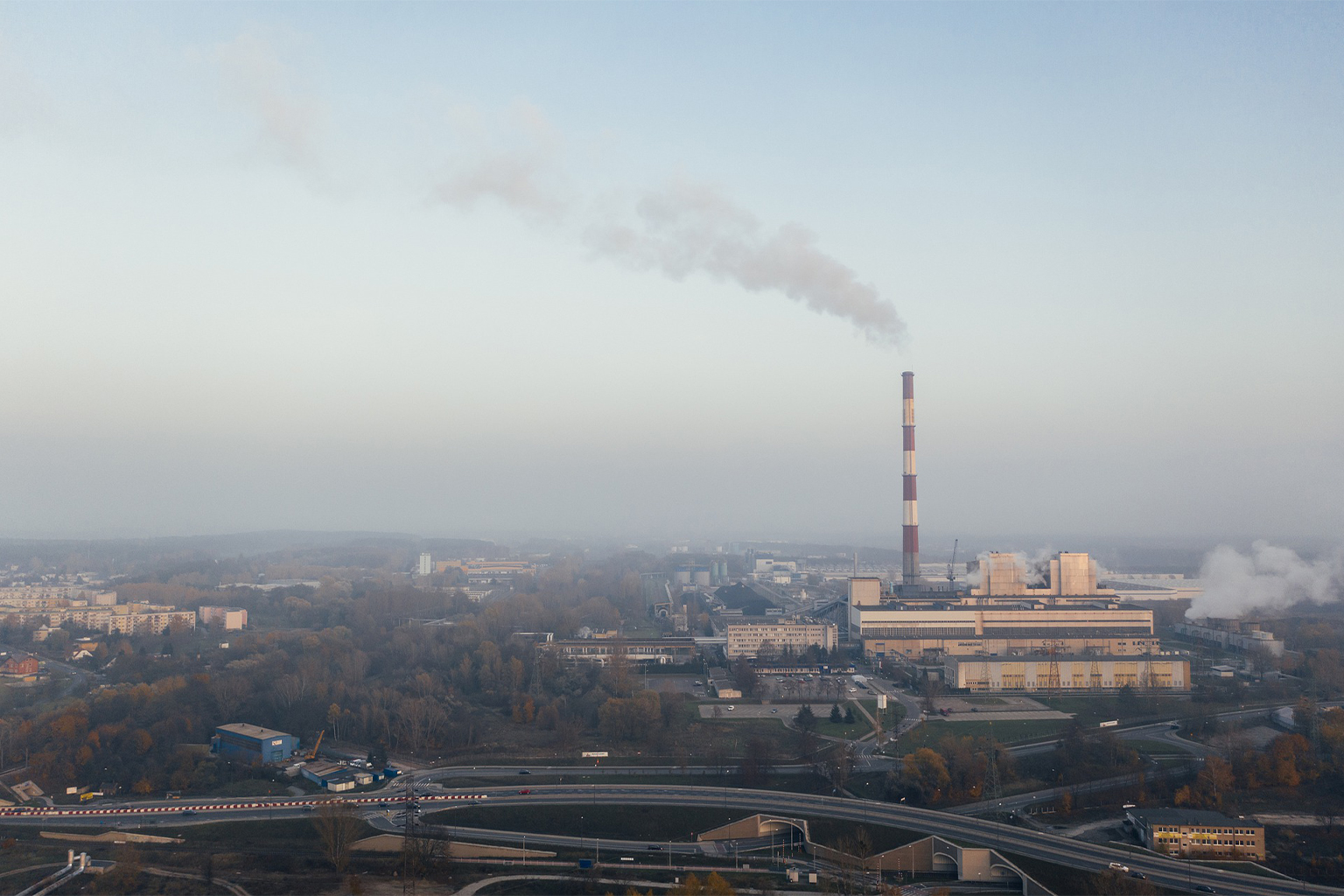
The elephant in the stratosphere: Geoengineering
Mongabay: Let’s talk about the elephant in the room which you identify in your book. Tell us: what is stratospheric aerosol injection and why is it so promising compared to some of the other climate intervention ideas you document?
Wake Smith: I’m going to quibble there too. It’s not that I think it’s the most promising; it’s the one on which I actually have unique expertise. The most promising is flue gas capture [capturing the carbon at the source, i.e. smokestacks]. We’ve got to do that right now. The next most promising is direct air capture.
But if it gets too hot and we haven’t rescued the world via decarbonization — the carbon capture process may itself take several centuries — then we would need something else that could help the people born in the net-zero year.
What would help is if we could turn down the intensity of the sun a bit; then there’s less energy coming into the climate system and that cools the Earth a little bit. That sounds monumentally difficult, but volcanoes demonstrate that it’s actually not quite that difficult, at least conceptually.
A big volcano pops off periodically, puts a bunch of sulfur dioxide into the lower stratosphere, which deflects 1% or 2% of incoming sunlight for a year or more. And the Earth is temporarily, but materially cooler as a result. The idea is that perhaps we could mimic this volcanic effect, likely with the very same thing, sulfur dioxide, Mother Nature’s sun reflector. We could put tons — hundreds of thousands, maybe millions of tons — of sulfur dioxide up into the stratosphere to deflect a little incoming sunlight and thereby slightly cool Earth relative to its unengineered state.
We’re not going to do that unless it gets really hot. One thing opponents of this idea misconstrue is that people are proposing stratospheric aerosols as an alternative to decarbonization.
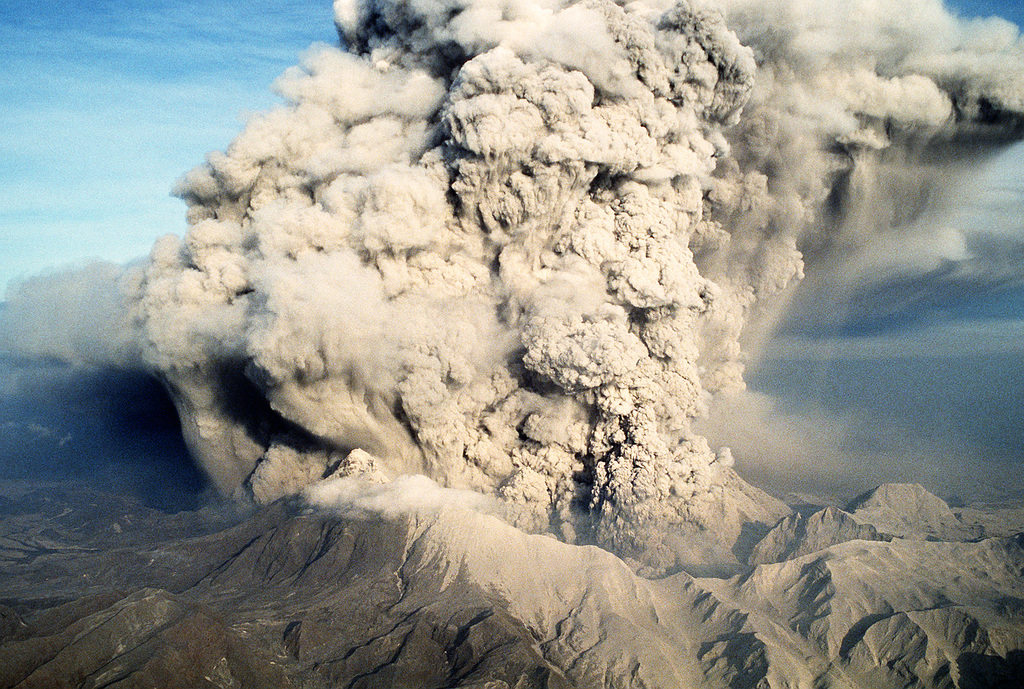
I don’t know anyone who’s proposing that, and certainly I’m not. We must decarbonize the old-fashioned way. There’s no good climate future that doesn’t lie down that path.
But, again, if we decarbonize too slowly and people can’t stand it (agriculture is no longer viable in large swaths of the world because it’s gotten too hot, for example), then those people are going to need relief, and it’s no longer that they need to buy another air conditioner. It’s literally that Niger, to pick a random country … can no longer feed its population. That becomes a big deal.
In such a world, might intervening in the climate system with stratospheric aerosols be better than unabated climate change? Well, maybe, but also maybe not. We still don’t know enough.
We’re pretty confident that [stratospheric aerosol injection] would do what we intend. It would cool the Earth. But might it mess up rain patterns somewhere, or kill rare swallows in some valley? Don’t know, but totally possible.
There’s a great deal of scientific experimentation needed before we want to push that button..
We’ve got other ideas beyond that one, but they’re nowhere near as good. If you’re not willing to accept that we might have that [dire] problem someday, then there’s nothing to discuss. But if one shares my emissions pathway pessimism, then suddenly you need to start inventing tools that will enable future people to thrive in the overheated climate we exported to them.

Mongabay: Describe a bit how this technology might work. How would we get aerosols into the stratosphere? How long would we need to do this for, and how often, to keep the slight cooling effect?
Wake Smith: This would look like a cargo airline … Roughly the amount of aircraft FedEx operates is the amount we would need to do this. It’s a big fleet, but it’s not a bigger fleet than the world has. Not a bigger fleet than the world’s biggest airlines.
Once we do this, we would intend to do it for decades, maybe a century or more. There’s always the possibility we start it and an unanticipated consequence causes us to stop. But if you did this, you would do it with the intent … it [would be] for a long time — every day, 365 days a year for decades at minimum.
We would do this from lots of airfields around the world … in both the northern and southern hemisphere, so that it doesn’t mess up the balance of weather in the two hemispheres.
One way it would look different from FedEx or UPS or DHL, is these planes are specialized — they need to go about twice as high as a normal airliner. An airliner flies at 30,000 or 35,000 feet [9,100-10,700 meters]. We need to go to 65,000 feet [19,800m] … We need to get up into the stratosphere [where aerosols] will hang around for 12 to 18 months. If we put it in the tropics, it will migrate over time … to the poles and descend there. We thereby get a global veil over the Earth.
With a team of former Boeing engineers, I’ve put together designs for aircraft that demonstrate this is perfectly doable with existing technology. These are airplanes with huge wings, and six or eight engines, enabling them to climb to the very high heights needed to deploy aerosols.
Frankly, the engineering and technology are the easy part. Harder than that is the science making sure we understand [potential] impacts.
Even harder is the governance. Who decides we’re going to do this? And how does that body get the informed consent of … the entire world to mess with the climate? How much are we cranking the global thermostat? What do we do if [aerosols have] negative consequences, in a few places even, if it mostly has positive consequences all over the world?
Governance is the most vexing issue because we would be intentionally intervening in Earth’s climate system, which is a big deal.
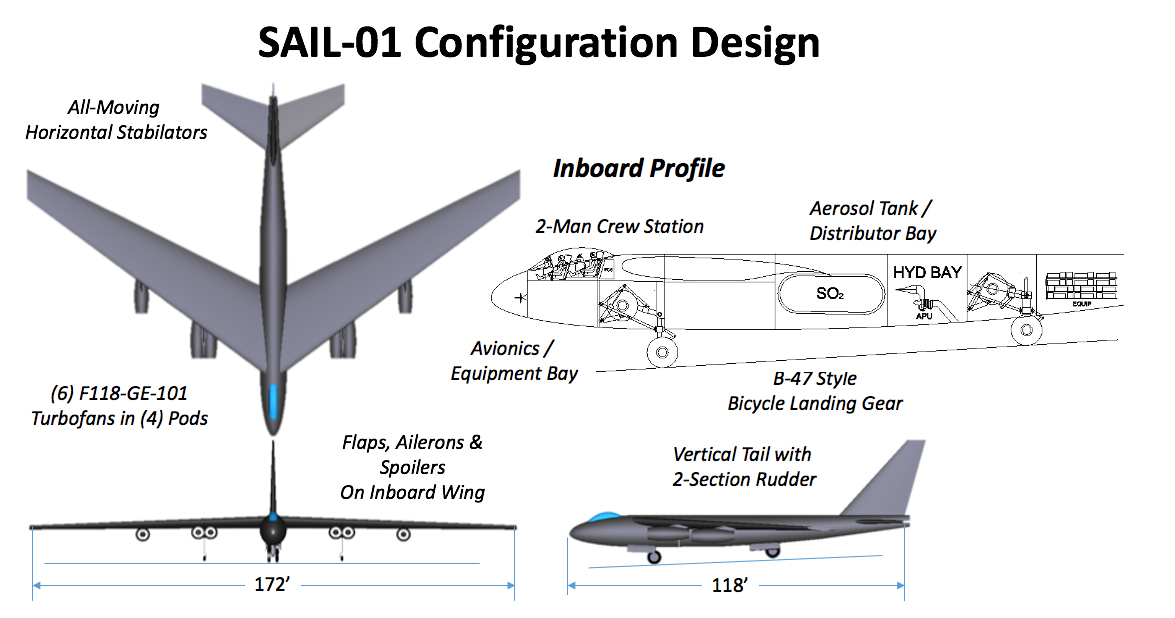
Mongabay: I know much is unknown, but based on what we understand, what could some negative impacts be, and how large?Wake Smith: We just don’t have the research yet. What could go wrong is messing up global rain patterns. Rain isn’t uniform around the world. Even if we just shuffle the deck, and there’s the same amount, but a lot more falls in Arizona and a lot less in Minnesota…
The circulations — both of the air, and of the water in the oceans — are much more [sensitive] than I think most people realize. The Sahara was once a wet place. Europe is as warm as it is because of both air and water currents that come up to it from the Caribbean. These things could change.
Climate change itself will change them. Counter-climate change [as aerosols are added] might change them [too]. We just don’t know enough about either. The hope is that stratospheric aerosols would restore the climate to more nearly the way it was, but that may or may not prove true.
Mongabay: You mentioned that stratospheric aerosols deposited in the tropics would eventually migrate to the poles. Given that the Arctic is currently warming up fastest and moving the region towards tipping points — extreme sea ice melting and permafrost thawing, for example, — have there been discussions about whether to do stratospheric aerosol releases toward the poles, to get a higher cooling effect there? Is that something being talked about, or again do we just not know how this might work?
Wake Smith: Both of those things. We don’t know, but it is being thought about. The current best idea on how you might design a stratospheric aerosol program is you would inject the aerosols at 15 degrees north and south, and also at 30 degrees north and south. Those that you inject at 15 degrees, will flow poleward … If you’re injecting at both 15 and 30 degrees, that will mean the farther north you go, the more of these aerosols there are.
This would have the effect of putting more aerosols over the areas that are warming the fastest, the higher latitudes. Moreover, you would likely [need to] adjust these injection amounts seasonally. There’s no point in putting a lot of gunk in the atmosphere at 30 degrees north in the winter hemisphere; there’s not much sunlight there to deflect. Whereas at 30 degrees south in the local summer, there’s a lot of sunlight to deflect.
There are various degrees of freedom by which you could engineer a better solution than just dumping it all at the equator and letting nature sort it all out.…
[And] what if we start the program just at the poles? After all, that’s where things are heating the fastest. That’s where the greatest contributions to sea-level rise will occur, because that’s where all the ice is [in Greenland and Antarctica]. If the ice melts, that’s what’s going to cause sea levels to rise. If we can stop the ice melting by deploying aerosols at the poles and subpolar regions — where it’s over the heads of 1% of Earth’s population — might that be a way to experiment with [this technology] with lower risk, and where it would do the most good?
The [polar] ice that melts … is what might sink [tropical islands at] the equator. [Saving that ice] would have global benefit. On the other hand, Indigenous peoples in the far north may say, “Wait a minute. You’re … messing with us again without our permission.” I don’t mean to suggest that this is a risk-free or cost-free intervention.
But one could make a case that the best [place] to start [stratospheric aerosol releases] would be at the poles and then work toward the equator, as we better understand [the process].

Mongabay: Obviously, what we’re talking about is a long way away. You and I will probably not see this happen in our lifetime.
Wake Smith: I’m confident that I will not. You’re younger than I am.
Mongabay: [laughs] I’m a little bit younger, but I’m pretty confident. My daughter might. That’s certainly possible.
Wake Smith: That’s quite right.
Mongabay: What do we need to do now to have a good idea of whether or not this is feasible and what the risks are? So that, my daughter, for example, or the children born this year, that they could make decisions based on whether or not this is necessary, and how it would look?
Wake Smith: The first thing I’m going to answer is the question you didn’t ask, by saying: the thing [we must do] first is still cutting emissions. None of this [geoengineering] changes that. That’s priority number one. We also need to start quickly scaling up flue gas [carbon] capture.
But it’s by no means too early to start research on both direct air capture and stratospheric aerosols in a big way now. In respect to stratospheric aerosols, in particular, that’s a controversial idea. There’s a petition floating around now proposing a ban on all research.
I think that’s a terrible idea, because it would leave the future — if it has this problem—with no considered tools to deal with it. I think that the people who are in favor of non-research, imagine they can tie the future’s hands: “Haha. We didn’t research it, so you can’t do it.”
The future ain’t going to play that way. If the future wants to do it, it will just go ahead and do it, whether we’ve done the research or not to help the future make informed decisions.
I think we need to accelerate research on all these post-net-zero-type climate interventions, certainly including stratospheric aerosols. For stratospheric aerosols we need to take it out of the lab. It is still [only] 100% lab-based. There has been [just] one field experiment [to date]. We need loads of field experiments to understand all the scientific and engineering questions we’ve been discussing. It is time for the world to commence that research.
To do that, we’ve got to succeed in socializing the message, and help people understand that decarbonization is absolutely necessary, but likely won’t be sufficient.

Mongabay: Yes, there’s a lot of hesitation and fear about even just doing basic geoengineering research. What are the risks of the research? Are there risks of sending a plane or balloon aloft and testing this? Are we going to accidentally cool our Earth?
Wake Smith: There are no direct risks in the research we might do in the next couple of decades. We’re not creating live organisms that can start reproducing, and sulfur doesn’t have sex — it’s not going to work that way. No one is talking about experiments on a scale that would have a detectable impact on weather or climate anywhere. None of those risks are real in the coming couple of decades. The risks people worry about are social risks, primarily around the idea of moral hazard.
[Moral hazard] means that if we let the man on the street know that this climate intervention exists, they’ll toss over decarbonization as a goal, and leap to [geoengineering]. It’s literally the first thing that is always expressed when people seek to push against research.
I just think it’s time to recognize that that isn’t how the world receives this idea. Twenty years ago, when [geoengineering] was a brand-new idea, one [could] imagine that the man on the street would react in that way.
But we’ve been presenting this now in various forums for 20 years or so now. Nobody hears about this and says, “That sounds great. Let’s forget about getting rid of coal; let’s just put some sulfur dioxide [in the atmosphere].” Nobody.
We no longer have to speculate about how people will react. People react primarily with horror when you say we’re going to have to do this to make the climate acceptable in the future.
People also imagine there’s a very slippery slope here: if we let this out of the lab, “Oh, it just did a roll down the hill, and we’ll be deploying in no time.” That just isn’t the way the world receives this. People are properly very cautious about it.
You can’t turn this into a weapon. The fact that I have this technology and my neighbor doesn’t, doesn’t create some strategic advantage in the way nuclear weapons might. Many of the things people are fearful of, in respect to research, I think are fantastical.
As I’ve said earlier, there are physical risks — [the technology] could turn out to do bad stuff we don’t intend — but the way to figure that out is to do [fundamental] research.

Mongabay: Last question. There’s tremendous anxiety and growing fear, especially among young people, about climate change. We watch our global leaders make a lot of promises, but not make a lot of progress. What for you, at this point, gives you hope?
Wake Smith: There are tools in Pandora’s Toolbox — they are mostly cutouts where future tools need to go; there’s no tool there now, but we can conceive of tools by which to contend with these problems.
I think inevitably, some of [these tools] will prove to be useful. The climate will create problems, but this isn’t going to be the end of humanity. I do occasionally bump into people who say, “I’m just not sure I should have children,” and I’m like, “How? It’s not going to be that bad.”
We will find ways to live in the [future] climate as it unfolds, but we should change it as little as we can. None of that is complacency. On my list of fears of what’s going to end humanity,: nuclear weapons is still at the top. This is nothing like that. We can foresee the problem: we can see that we’re on the deck of the Titanic. But we can see the iceberg right there.
If we peer out into the future, it seems very clear: we’re going to have problems with an overheated climate. But the fact that we can perceive that so long in advance gives us time to try to find solutions. And one way or another, I expect that we will.
Banner image: Contrails in the sky. Image by Yandle via Flickr (CC BY-SA 2.0).
FEEDBACK: Use this form to send a message to the author of this post. If you want to post a public comment, you can do that at the bottom of the page.








